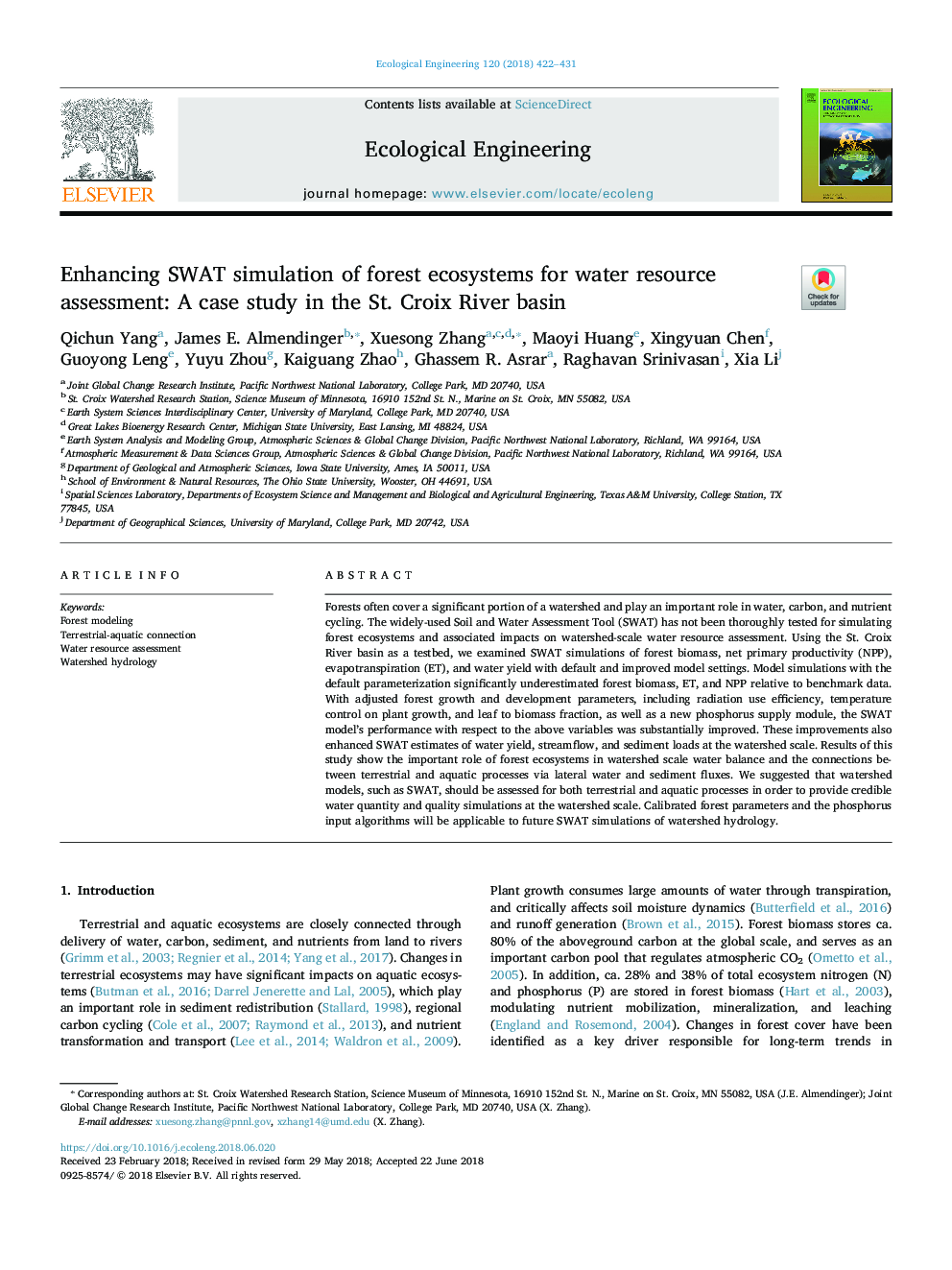| Article ID | Journal | Published Year | Pages | File Type |
|---|---|---|---|---|
| 8847836 | Ecological Engineering | 2018 | 10 Pages |
Abstract
Forests often cover a significant portion of a watershed and play an important role in water, carbon, and nutrient cycling. The widely-used Soil and Water Assessment Tool (SWAT) has not been thoroughly tested for simulating forest ecosystems and associated impacts on watershed-scale water resource assessment. Using the St. Croix River basin as a testbed, we examined SWAT simulations of forest biomass, net primary productivity (NPP), evapotranspiration (ET), and water yield with default and improved model settings. Model simulations with the default parameterization significantly underestimated forest biomass, ET, and NPP relative to benchmark data. With adjusted forest growth and development parameters, including radiation use efficiency, temperature control on plant growth, and leaf to biomass fraction, as well as a new phosphorus supply module, the SWAT model's performance with respect to the above variables was substantially improved. These improvements also enhanced SWAT estimates of water yield, streamflow, and sediment loads at the watershed scale. Results of this study show the important role of forest ecosystems in watershed scale water balance and the connections between terrestrial and aquatic processes via lateral water and sediment fluxes. We suggested that watershed models, such as SWAT, should be assessed for both terrestrial and aquatic processes in order to provide credible water quantity and quality simulations at the watershed scale. Calibrated forest parameters and the phosphorus input algorithms will be applicable to future SWAT simulations of watershed hydrology.
Keywords
Related Topics
Life Sciences
Agricultural and Biological Sciences
Ecology, Evolution, Behavior and Systematics
Authors
Qichun Yang, James E. Almendinger, Xuesong Zhang, Maoyi Huang, Xingyuan Chen, Guoyong Leng, Yuyu Zhou, Kaiguang Zhao, Ghassem R. Asrar, Raghavan Srinivasan, Xia Li,
